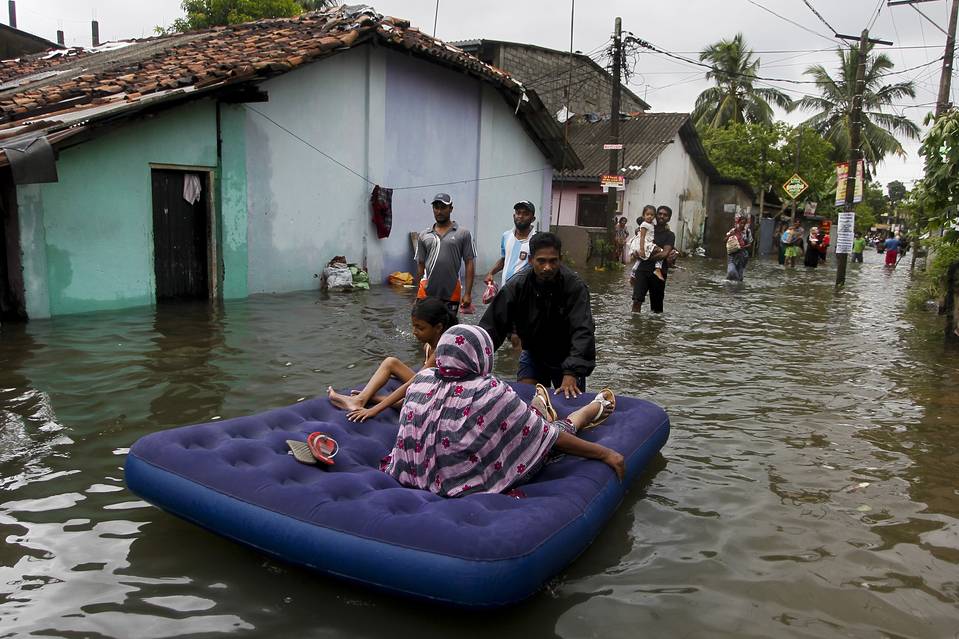Srilanka faces nature’s rage
May 31, 2017 | Expert Insights

Three days after enormous mudslides and territorial rain across southwestern portions of Srilanka, at least 150 people have been killed and over half a million Srilankans are displaced. The extreme weather has triggered landslides throughout the country forcing government to take assistance from International Organizations and neighboring countries.
Ongoing Crisis
Eastern, Western and Central Provinces of the country have moderate rainfall throughout the year. The southwest coast and mountain slopes are the moist region, with heavy rainfall during the months of April to June and October to November. In the past few days, southwest regions experienced heaviest rains due to the onset of the southwest monsoon, which typically arrives in Sri Lanka in late May. Nearly fourteen districts are currently affected by the rainfall. At the same time, Northern, Eastern and Central Provinces are also facing negative consequences of the Southwest monsoon. The worst impacted city due to heavy rainfall is Galle, city on the Southwest coast of Srilanka. In terms of deaths, the highest death toll is reported from Ratnapura with 46 confirmed deaths. The healthcare institutions are also affected by the weather conditions. The Ministry of Health reported evacuation of five hospitals due to the floods and risk of landslides. Several hospitals have come across the problem of electricity and water supply breakdown. A drop down in rain has been forecasted for the next few days. The government has deployed 2000 military personnel to affected areas.
Who is assisting Srilanka?
Indian navy diving and medical teams have been deployed to assist Srilanka navy operations as the country face worst flood since 2003. The Indian navy ships INS kirch and INS Shardul reached the Colombo port on Saturday. INS Shardul with 27 officers and 100 sailors carried a medical team of three doctors and 6 medical assistants, a diving team of 12 divers and several life-saving teams along with dry ration and drinking water. Meanwhile, Chinese government announced to donate emergency humanitarian relief goods worth USD 2.2 million for Srilanka.
World health organization will support medical team in the affected areas. United Nations has promised to donate water purification tablets, tents and other supplies for the displaced while Pakistan also promised consignments of relief supplies.
Analysis
In May 2003, a tropical cyclone called as “Very Severe Cyclonic Storm BOB 01” lead to the worst flooding in Srilanka in 50 years. Heavy rainfall deluged South-Western Sri Lanka between the 11th and 19th of May 2003 claiming 260 lives. The flood destroyed 10,000 houses along with other infrastructure, causing an overall damage of $135 million. A reduction of 20-30% for the output of low-green tea was seen. Many were left without government assistance. Large part of the country reported electricity breakdown. The World Meteorological Organization (WMO) cited this disaster as a symptom of the increase of atmospheric extreme events due to global climate change.
Assessment
Srilanka is prone to natural disasters commonly caused by floods, cyclones, droughts, floods and coastal erosion for decades with huge losses of life and property. Climate change has been linked to frequent extreme weather conditions around the world including.
May is the month with highest rainfall variability and the highest frequency of flood incidents in South-Western Sri Lanka. Prior rainfall predictions should be utilized to take necessary measures before-hand. Various resources such as remotely sensed data, climate diagnostics and weather prediction to be made use of in developing hazard warning system and planning other viable options.








Comments